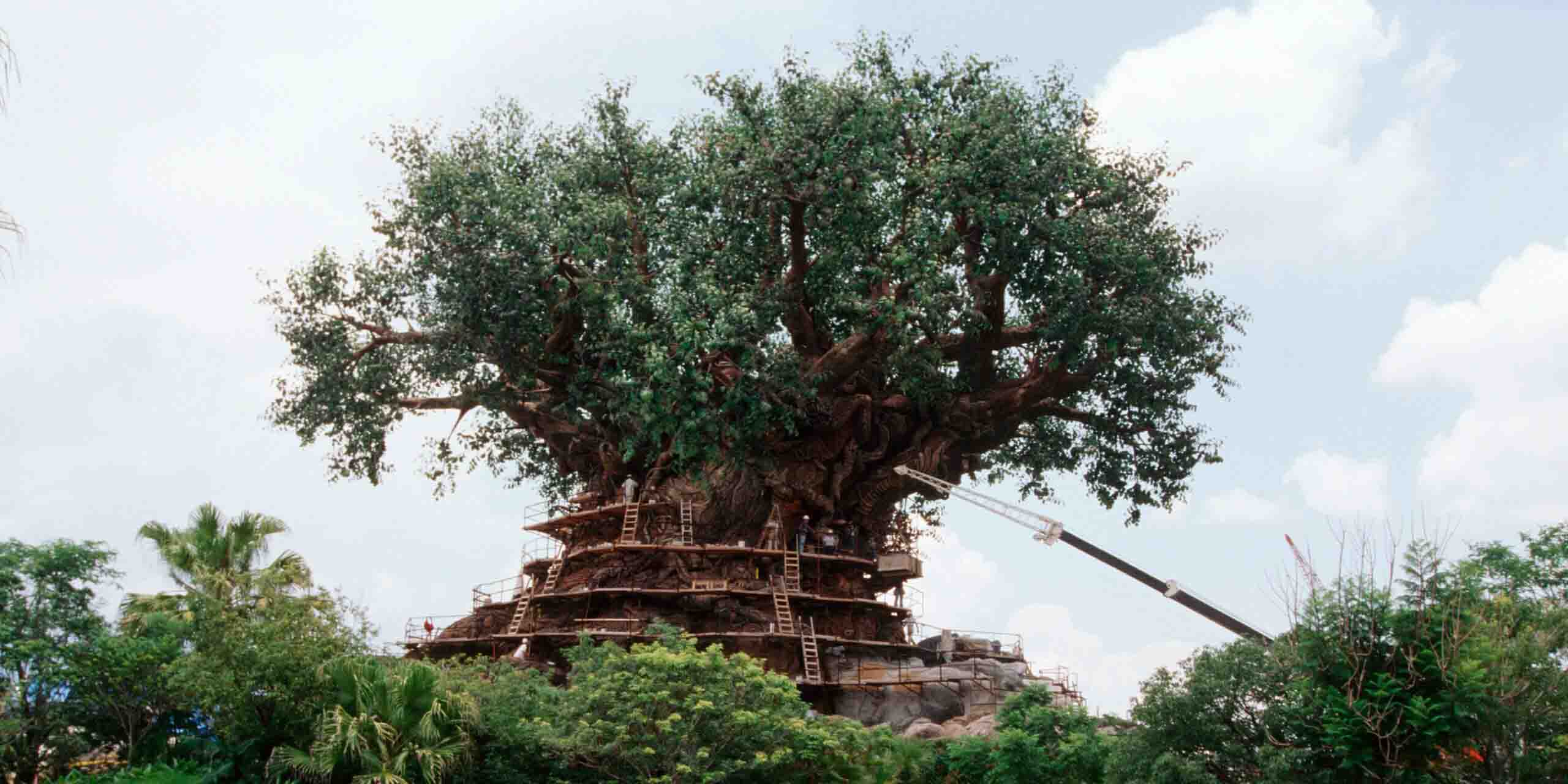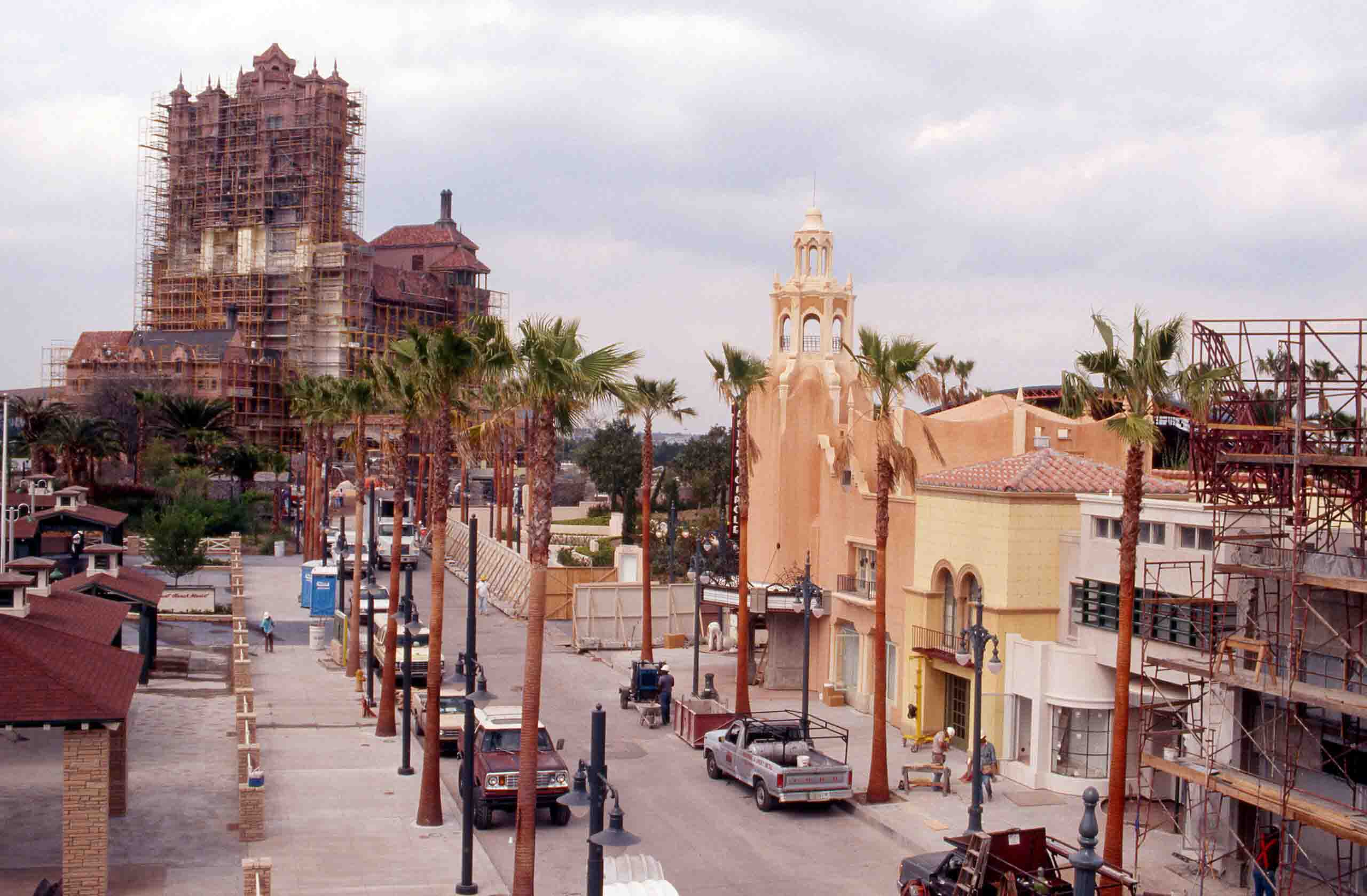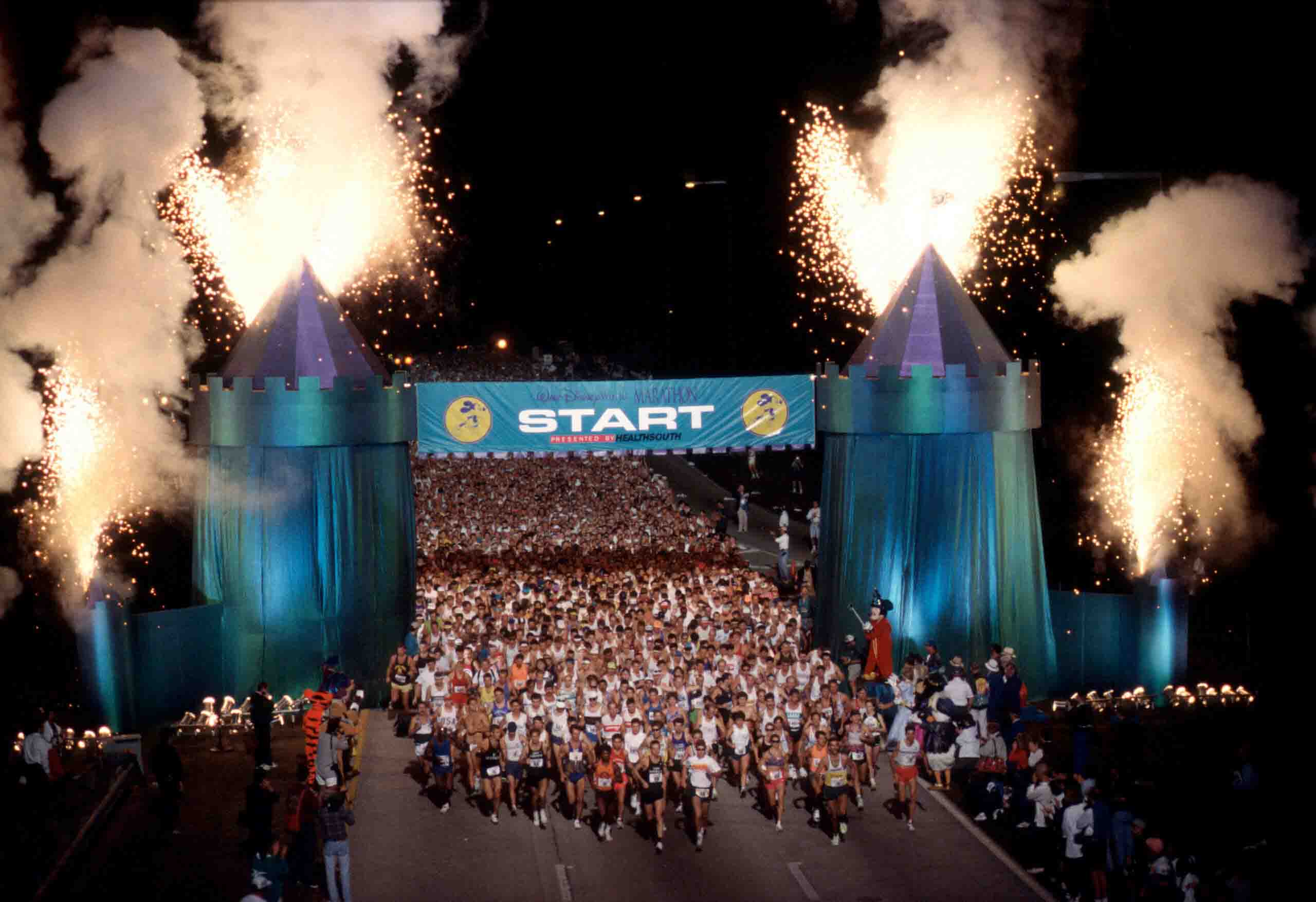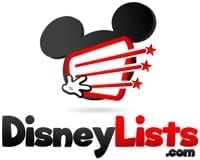A Walt Disney World Retrospective: Ten Magical Milestones of the 1990s

The sound of applause echoed through the Los Angeles conference hall as Disney CEO Michael Eisner stepped off the stage at the conclusion of the Disney Shareholders meeting on February 6, 1990. The executive had just finished outlining his vision for the Walt Disney Company over the next ten years, something he called “The Disney Decade.” After coming off five-and-a-half years of earning the trust and respect of Disney’s various shareholders and stakeholders, Eisner was prepared to bring the company into a period of unprecedented expansion, including new partnerships, great successes in the animated film department, and several added experiences to the Disney parks that would change vacationing at the Walt Disney World Resort forever. Learn more about ten magical milestones in the 1990s below.
10- The Wedding Pavilion at Disney’s Grand Floridian Resort and Spa
While most guests of the Walt Disney World Resort are merely casual visitors, there has always been a subgroup of “super fans” who love all things Disney. It had been the dream of many brides to add an additional touch of magic to their special day, inspiring Disney to build The Wedding Pavilion as an official venue for wedding ceremonies to take place at the Walt Disney World Resort. The first wedding at the all-white Victorian-themed pavilion took place in 1995, and would go on to inspire thousands to pine for the opportunity to wed at the Most Magical Place on Earth.
9- Disney’s Wide World of Sports Complex
In an effort to bring more revenue to Walt Disney World, as well as prove that the resort could be a destination for all sorts of groups and not just families visiting the theme parks, Disney decided to open the Wide World of Sports Complex, which welcomed its first visitors in 1997. Initially serving as the home field for the Atlanta Braves baseball team during its Spring Training, the complex has expanded to play host to a number of athletic events, including the Pop Warner Super Bowl and national cheerleading competitions.
8- Downtown Disney
With the expansion of Walt Disney World due to the success of EPCOT Center and Disney-MGM Studios (which opened in the 1980s) and the addition of more resorts across the property, it was decided that the Disney Village Marketplace and Pleasure Island nightclub district would be expanded. While the Disney Village Marketplace offered a variety of shops and restaurants, few of them had a distinct affiliation or branding with Disney. This changed when, in 1996, the World of Disney store opened with claims that it was “the largest Disney store on Earth.” This development kicked off the rebranding of the shopping and entertainment district, which became known as Downtown Disney on September 7, 1997, followed by the addition of several new offerings including a new Cirque du Soleil show, DisneyQuest, the Virgin Megastore, the Rainforest Cafe, and Planet Hollywood. Pleasure Island and its clubs continued to exist as a separate ticketed “neighborhood” which was mainly closed during the day and accessible only to those aged 18 and older in the evenings. These new offerings made the Downtown Disney shopping district a destination in its own right, providing hours of entertainment outside the parks and resorts.

7- Fantasmic!
As Disney-MGM Studios approached its ten-year anniversary in 1999, it was determined that a nighttime spectacle should be added to the park as a replacement for the Sorcery in the Sky fireworks show; the central hub of the park was becoming too crowded at park closing due to the pyrotechnic display centered around The Great Movie Ride’s Chinese Theater facade. It was determined that Fantasmic!, a hugely popular show featuring fireworks, water projection, and costumed characters that had been performing at Disneyland since 1992, would begin nightly performances in the Hollywood Hills Amphitheater, located at the end of Sunset Boulevard near the new Twilight Zone Tower of Terror attraction. Fantasmic! opened on October 15, 1998, and quickly became a fan favorite.
6- More Deluxe Resorts
With new theme parks and expanded entertainment offerings, Eisner and his team recognized that new resort offerings were necessary. Most of these new themed resorts fell into the “Deluxe Resort” category, which included several amenities such as sit-down restaurants, larger pools, great views, easy access to the theme parks, and wonderful theming. Recognizing a need for added convention space at Walt Disney World outside of the Contemporary Resort, Michael Eisner charged architect Michael Graves to design a pair of resorts which would be located on Walt Disney World property but built, owned, and operated by the Tishman Group. The result, which became known as Walt Disney World Swan and Dolphin Resorts, opened in 1990. To ensure that Disney was remaining competitive to these third-party-owned resorts, Disney opened two more deluxe resorts throughout the decade: Disney’s Wilderness Lodge, which was themed after the National Park lodges of the Pacific Northwest and opened in 1994; and Disney’s BoardWalk Resort, which represented the turn-of-the-century boardwalks of Coney Island, Jersey Shore, and Atlantic City, which opened in 1996. While these resorts featured a high price point, Disney also determined to offer more moderately-priced resorts, opening Disney’s Port Orleans Resort in 1991, Disney’s Dixie Landings Resort in 1992, and Disney’s Coronado Springs in 1997.
5- Disney’s All-Star Resort
It quickly became obvious that more budget-friendly resort options needed to be offered as well. Beginning with the All-Star Sports and All-Star Music Resorts in 1994 and the All-Star Movies Resort in 1999, these resorts featured minimum amenities, including motel-style courtyards, food court dining halls, and smaller swimming pools. These resorts also featured theming that was less elaborate than their deluxe and moderate counterparts, focusing instead on the generic themes of athletics, musical genres, and popular film franchises of the late 1990s. These themes were represented by larger-than-life icons scattered throughout the resorts, such as three-story-tall xylophones, football helmets, and a bucket of Green Army Men from Toy Story. These options made a Walt Disney World vacation much more economical for families as the 1990s progressed.
4- Celebrations Galore!
As Walt Disney World expanded, more income was necessary to support this expansion. To drive more guests through the park gates, as well as to motivate guests who had visited in the past to return to the resort. A number of new multi-day celebrations began being held at Walt Disney World’s second park, recently rebranded from EPCOT Center to Epcot. With the popularity of exercise culture in the late 1980s and early 1990s, the resort hosted the first annual Walt Disney World Marathon in 1994. That same year, Epcot began hosting the Epcot International Flower and Garden Festival, celebrating springtime through the use of topiaries and flora native to the countries of the World Showcase. Epcot’s celebrations expanded with the International Food and Wine Festival in the fall of 1996 to draw guests, locals and tourists alike, during a time of year when crowds at the parks were particularly thin. As the decade came to a close, however, Disney’s marketing team came up with a great idea: to hold a two-year-long celebration commemorating the new millennium. Epcot’s Millennium Celebration, which would last from 1999-2001, featured new mini-pavilions in World Showcase’s Millennium Village (located between the Canada and United Kingdom pavilions); a new lagoon fireworks show, Illuminations: Reflections of Earth; Leave a Legacy, which allowed guests to have their photograph engraved in marble and placed at the park entrance; and a nightly parade, Tapestry of Nations, whose popularity spawned the halftime show of Super Bowl XXXIV. While many have recently criticized Epcot for its nearly year-long schedule of festivals, collectively they have upheld the park’s initial vision: to “entertain, inform and inspire…[by] celebrat[ing]…imagination, wonders of enterprise, and concepts of a future that promises new and exciting benefits for all.”

3- Disney’s Animal Kingdom
Michael Eisner felt a strange presence next to him. Slowly, he turned his head to find an 800-pound Bengal tiger sitting next to him on its haunches–and it wasn’t Tigger. The beast wasn’t looking at the CEO, but rather had locked eyes with the president of the Walt Disney Company, Frank Wells, as its large pink tongue flickered between its sharp teeth and licked its lips. Slowly, the executive turned his head back towards the rising Imagineer standing at the front of the conference room. Frustration bubbled inside Eisner: he had met with this bold young man, an Imagineer named Joe Rohde, a few months prior when he rejected the proposal for an animal-themed park, explaining that Disney “didn’t do zoos.” However, it was the thrill of the live creature, the danger it posed, and the mystery of its land of origin that helped the executive team to realize the potential that an animal-themed park could have for guests of all ages. Ground was officially broken in 1995 for Walt Disney World’s largest park. Disney’s Animal Kingdom opened to guests on April 22, 1998–Earth Day.
2- Disney Vacation Club
“Discover the Best Kept Disney Secret!” exclaimed a billboard at the intersection of Backstage Lane, Chelonia Parkway, and Buena Vista Drive. I used to love seeing this billboard on the way to and from Disney-MGM Studios. The sign was shaped like a red van with bags and suitcases strapped to the roof. Goofy is driving with his head hanging out the front window, while Pluto peeks out the back window. The silhouettes of Mickey, Minnie, Donald and Daisy can be seen sitting inside the van as well. As a child, I was always curious about what this “secret” was. Little did I know that the answer lay just across Epcot Center Drive. Disney’s Vacation Club Resort (later renamed Disney’s Old Key West Resort) began accommodating guests in 1991, offering condo-style units including kitchenettes. The Disney Vacation Club, or DVC, allowed guests to buy into a Disney-managed timeshare. Over the past twenty years, fifteen DVC properties have opened throughout Walt Disney World and Disneyland Resort, with standalone resorts in Florida, South Carolina, and Hawaii. As of this writing, two additional DVC resorts are currently in development. These new lodging accommodations granted guests flexibility in travel, as well as the opportunity to stay for longer trips with expanded amenities.
1- Fastpass
Disney’s leadership had found success in drawing exponentially larger crowds to Walt Disney World as a result of their expansion with new parks, new resorts, and new experiences over the span of the decade of the 1990s. Imagineers also recognized that, with the opening of Universal’s Islands of Adventure just down the road in the spring of 1999, Disney needed something to set them apart from the competition: long lines at the Disney parks could potentially drive guests away from the resort’s properties. As a result, in anticipation of record-breaking crowds visiting central Florida as part of Disney’s Millennium Celebration, Walt Disney World introduced Disney’s Fastpass. This virtual queuing system was marketed as a free perk for those visiting the parks: guests would simply need to put their park ticket into a Fastpass kiosk at the entrance of the parks’ most popular attractions and a separate Fastpass ticket would be printed with a return time stamped on it, making the time spent in line significantly shorter. This system would later give way to Fastpass+ and the upcoming Lightning Lane system in the Disney parks; rather than planning Fastpass ride times months in advance, however, the original incarnation only allowed guests to get one Fastpass at a time and only in person at the parks. However, the introduction of this system brought the Disney theme park experience into the digital age and transitioned the vacation experience from one of spontaneity to one that would lead to meticulous planning over the next decade.
More on our Walt Disney World Retrospective:
Click here to learn more about ten magical milestones in the 1970s.
Click here to learn more about ten magical milestones in the 1980s.
For a no obligation, FREE Quote on a Disney vacation package, please contact our travel partner Magical Vacation Planner at 407-442-0227 (407-442-0215 for Spanish). You can also request a FREE quote online by Clicking HERE.

